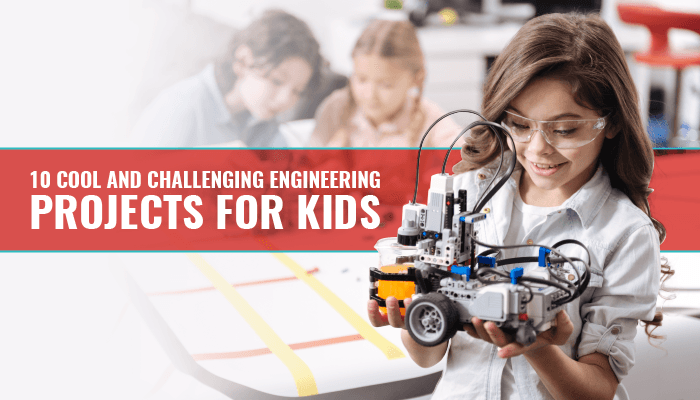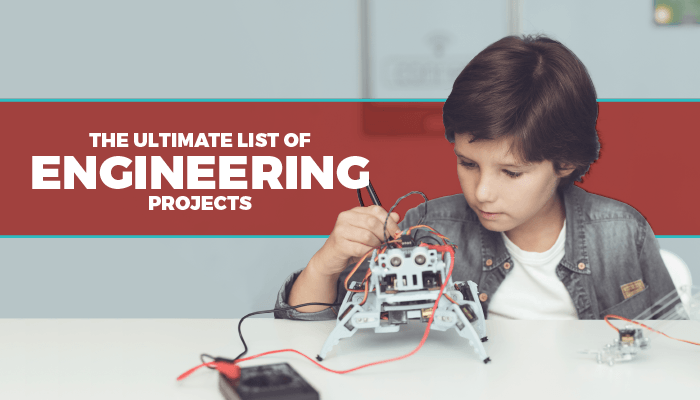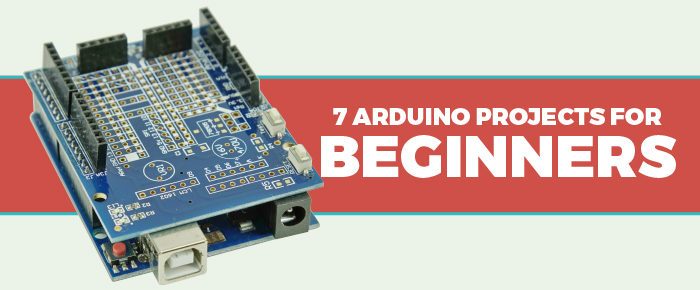Summer’s here, and with it comes endless possibilities. For some, this means spending lazy days at the pool or in the park. For others, it means spending real time creating.
We’re not talking about crafts here — we’re talking about real engineering projects for kids.
And it seems like every time you turn around, there are new and exciting ways for kids to stretch their imaginations and build something new.
If you’re looking for interesting and exciting ways to put your engineering skills to the test this summer (or, really, any time you want to) then we’ve got some great engineering ideas for you right here.
These are simple projects that any kid of any age can make, and if you’re already using an arduino, chances are you’ve got most of the materials already at hand
So, what makes a great engineering project for kids?
This is not an easy question to answer — in fact, if you asked twn different people you’d probably get 10 different answers.
But, it’s not hard to at least come up with a list of qualities that make projects like this worth doing. Among these qualities, we’d definitely choose these three:
- Fun. Of course, it has to be fun, or why bother doing it in the first place, right?
- Challenging. We want you to have fun, but we also want you to learn and grow in your engineering skills as you attempt these projects.
- Practical. As you build your projects, you should be learning skills that are useful not only for your project now, but also for other applications in the future. And the best part about this is that, when you add your imagination, there’s not telling what will be useful and how. Really, the sky’s the limit!
With that being said, here are some of the best engineering projects we’ve found to be a lot of fun for kids:
Challenging Engineering Projects For Kids
1) Arduino Train for Kids
Kids and model trains have gone together now for the better part of a century, so it only makes sense that at some point these model trains have to join the digital age. This is where the arduino train for kids comes in.
With just a few components you can turn your old, boring train into a smart train that can be controlled from your mobile phone or tablet.
You can even add functions like flashing lights or a sounding horn. And the great thing is that just about any old electric train will do.
If you have more than one train engine lying around, why not do this to several of them so that you and your friends can all play together? Either way, this project is sure to make your old train fun again!
https://www.youtube.com/watch?v=9Mk6sVmAQ04
Supplies:
– one electric-driven train engine
– one Arduino Nano R3
– one L9110s motor driver
– bluetooth HC-06
2) Crawling Arduino Robot
Speaking of robots, when you’re ready to build more than just an arm, this is the project to check out. If you have a 3D printer, then most of this project comes in the form of downloading schematics and printing out components.
The actual assembly is pretty easy — but the result is one-of-a-kind: a crawling robot that provides hours of endless entertainment.
Supplies:
– LittleArm MG90S Servo
– LittleBots Control Board
– LittleBots HC-06 Bluetooth
– LittleArm 3D printing filament
– Arduino Nano R3
3) Simple Programmable Robotic Arm
Who doesn’t love robots, right? In fact, many of the projects listed here are robots because not only are they fun to build, they’re fun to play with afterwards!
This project, though, is a little bit of a smaller scale, as you will only be building an arm, rather than the whole robot. However, the arm is programmable, and can be programmed to go into different positions and perform simple tasks. If you’ve not built a robot yet, this should be your first one.
Supplies:
– Arduino UNO and Genuino UNO
– generic breadboard
– generic jumper wires
– three rotary potentiometers
– three SparkFun pushbutton switches
– five generic LEDs
– five resistors (221 ohm)
– capacitor (optional)
– three servos
– two resistors (10k ohm)
– a hot glue gun
4) LCD Game
Playing video games used to feel like you were taking a step into the future. Even those old four- and eight-bit games at one time represented the pinnacle of technology. Now, just about anyone can create their own video game with just a small handful of supplies and a little bit of know-how. If you want to learn how to make a small, simple game with just a handful of supplies, then this is the project for you.
Supplies:
– arduino UNO and Genuino UNO
– generic jumper wires
– buzzer
– standard 16 x 2 LCD (White on Blue)
– three SparkFun pushbuttons (12mm)
– YWRobot arduino LCM1602 conventor
5.) Arduino Keyboard
If you are a musician, then you might have wondered what goes into making musical instruments.
For most, there are centuries of tradition and craftsmanship that go into producing just the right tones.
For modern musicians, though, there are new and exciting ways to make music. Like this electronic keyboard, assembled with just a handful of basic components.
Supplies:
– Arduino UNO and Genuino UNO
– seven SparkFun pushbutton switches 12mm
– passive buzzer
– resistor (221 ohm)
– 17 generic jumper wires
Really Challenging Engineering Projects For Kids
6) Arduino Sunflower: An Electric Sun-Dancer
Have you ever noticed the way that sunflowers actually follow the sun as it moves through the sky? Pretty cool, huh? Did you know that you could actually build a device to do the same thing?
It’s true, and in this project you can build a device that does exactly that: uses photosensitive technology to follow the sun — or any light source, actually — as it moves.
Not only is this an easy project, but you’ll see that technology can be made to copy a lot of different behaviors that we find in nature.
Supplies:
– cardboard
– Two styrofoam boards
– one stick
– six 3-pin cables
– two linear potentiometers
-four light sensors
– Crowtail- Pan- Tilt x 1
– arduino UNO and Genuino UNO
– seed base shield V2
7) Backpack Alarm
For a project that’s a little less involved and a little more fun, check out this backpack alarm. It’s really a motion detector and alarm — it doesn’t have to be just for backpacks (although the demo video shows how putting one of these in a backpack is a great idea!).
If you have anything that you want to keep an eye on and be told when it’s being moved, this simple project is perfect for you.
Supplies:
– Arduino UNO and Genuino UNO
– Adafruit Triple-axis Accelerometer & Magnetometer Board – LSM303
– SparkFun large piezo alarm – 3kHz
– 9V Battery
– 6.35mm female audio jack
– 6.35mm audio plug
– 9V to barrel jack connector
8) Your First Arduino Robot
If the above robot project was a little intimidating, or if you don’t have a 3D printer, there are still plenty of robotic projects out there that you can attempt.
This one is a great beginning robot project because it’s relatively simple, but in the end you still have a pretty cool robot that comes with several tricks up its sleeve — the most important one being that it’s controlled by your smartphone!
Supplies:
– Arduino UNO and Genuino UNO
– Adafruit L293 motor shield
– HC-SR4 ultrasonic sensor
– HC-05 bluetooth module
– two geared motors
– two wheels
– two caster wheels
– three 9V batteries
– three 9V battery clips
– eight female/male jumper wires
– plastic box
– soldering iron
– hot glue gun
– screwdriver
9) Spooky Jack-o-Lantern
When October rolls around, there’s nothing better than carving a pumpkin as a decoration.
You’ve seen all of the specialty kits available in stores that help you carve intricate designs into your jack-o-lanterns; well, now with a little engineering knowledge you can take your pumpkin one step further and turn it into a multi-media showcase!
Supplies:
– two Arduino UNO and Genuino UNO
– speaker: .25W, 8 ohms
– generic breadboard
– generic jumper wires
– neopixel strip
– LED strip connector
– hot glue gun
10.) Arduino Line Following Robot
You may think it would be really challenging to get a robot to follow a line but we live in some amazing times! In this tutorial, you will learn everything from basic motors to installing a QTR Reflectance Sensor.
Supplies:
- Arduino Board
- Motor Shield (Adafruit)
- QTR-8RC Reflectance Sensor Array (Pololu)
- DC Motor x2
- Wheel x2
- Bovine Wheel
- Chassis plate
- Battery 9V
- Battery Buckle
- Wires
- Button
- Glue Gun
- Electrical Tape
In Conclusion
Whatever your skill level or area of interest, there’s a cool engineering project just waiting for you to tackle!



